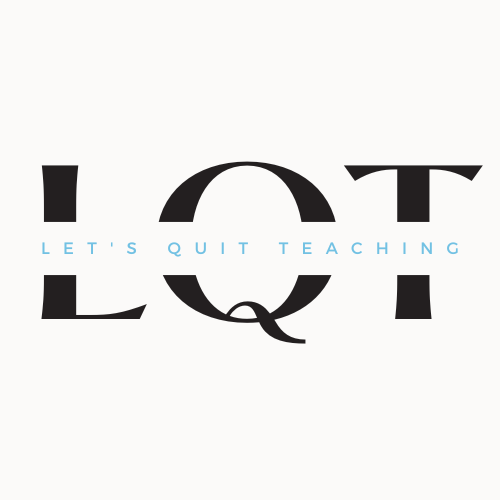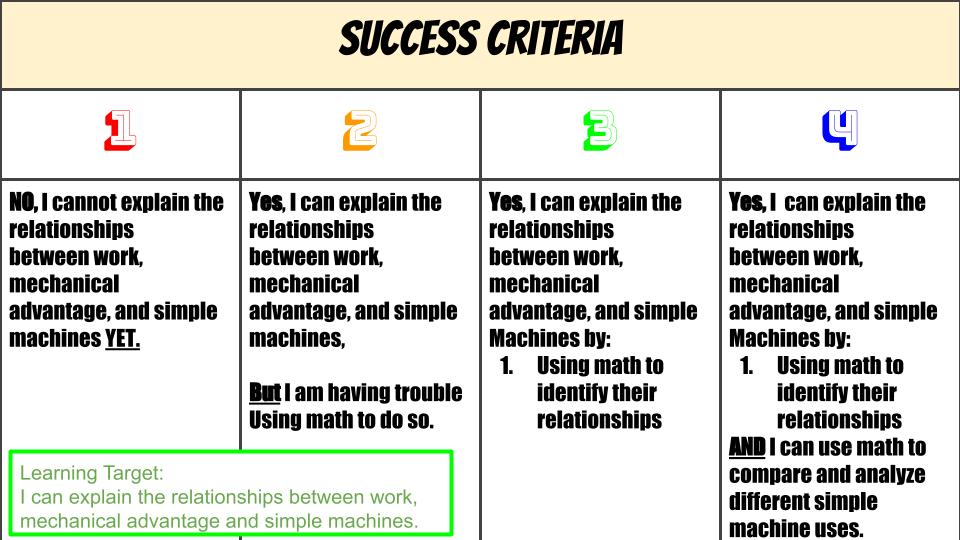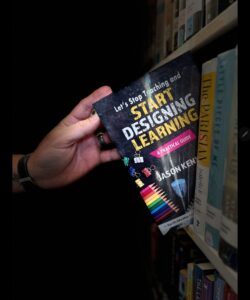Remember that scene in Walk the Line, when Joaquin Phoenix as Johnny Cash walked into the recording studio to play for the first time for Sam Phillips. The first attempt did not go so well, and Sam’s reply to Mr. Cash helped bring a little perspective to the situation. “All right, let’s bring it home. If you was hit by a truck and you was lying out there in that gutter dying, and you had time to sing ONE song. Huh? One song that people would remember before you’re dirt. One song that would let God know how you felt about your time here on Earth. One song that would sum you up. You tellin’ me that’s the song you’d sing?”
That made me think about what we do for learning. What would be the ONE thing I would bring to the classroom to make a lasting impact. If there was only one thing I could choose to tell others to do, the ONE thing, it would be the development and daily use of quality Success Criteria for everything we ask learners to do. Here’s why it is my one choice.
Works in Many Ways
Success Criteria alone has an effect size of 0.88 or a little over 2 years of potential growth in learning. When we let learners in on the “secret” of how their work will be judged in the end using some set, concrete standards, it only helps make the learning in the room more clear to everyone. I’m not talking about a huge, wordy rubric. Success criteria are best when they are brief, tangible and accessible for learners. If you want to take it to the next level, they are even better when created collaboratively along with the learners in the room. It helps bring the focus on the work to learning rather than on completion. Besides, you can’t have Teacher Clarity (ES=0.84) which have over 2 years of potential growth without Success Criteria in the first place. But, there are some other benefits they bring that are often overlooked.
Forces Teacher Examination of the Task
If we want to develop quality Success Criteria, it involves us looking at what we are asking learners to “do” in class. Often, I have found that when teachers are struggling with the creation of Success Criteria it comes down to the task being asked of the learners in the room. If we want students to engage in something that produces evidence of learning, we have to be able to define what qualities the evidence should have that proves learning occurred. Sometimes this is difficult when we are simply handing out a worksheet to complete or a set of questions to simply mark right or wrong. When we start making Success Criteria a part of our everyday learning in the room, teachers begin to look at what learners are asked to complete. We begin to reflect and revise these tasks that allow for the creation of quality Success Criteria, which often results in a higher quality learning task.
Enables the Creation of Tools and Pathways
When creating Success Criteria, teachers also can begin to build in other aspects into the learning of the day and the completion of the task that allow learners to take on more of the heavy lifting in the learning. We create Success Criteria and then identify the possible pitfalls learners may encounter. This is the perfect place to design tools to escape these misunderstandings that learners can access on their own and get themselves out of the places where they get stuck in their learning. For those learners who need to take it to the next level, we can create pathways to extend and accelerate learning relating to the Success Criteria as well.
Allows Students to Critically Critique Themselves
Learners can use Success Criteria to determine where they are in their learning. The influence with the third highest effect size at 1.33 (3 + years of growth potential) is Self-reported Grades. That requires learners to look at their evidence against what success is and think critically about their performance and evidence. It will result in reflection and revision on their part in their learning. They will be able to determine where they are in their learning and where they would like to go. This opens the doorway for meaningful feedback.
Provides Opportunities for Meaningful Feedback
Using Success Criteria is a way to make feedback tangible and stick with learners. Once a learner recognizes where they are in learning according to the criteria, they can then determine where they need to go from there. The teacher now can step in with, “Okay, here’s where you say you are. Here is where you want to go. Now, the steps you can take to get there are […]” That’s feedback. Feedback has to be tied to a goal (Learning Target) and what quality looks like (Success Criteria) in order to mean something to learners. This is how we get learners to take on the learning that has always belonged to them in the first place.
Consider beginning to use Success Criteria in your classrooms. Not only will it help drive the clarity of the learning in the room, it will also produce higher quality learning tasks, differentiation, ownership of learning and opportunities for feedback. It will take the “work” off the teacher during class, giving learning back over to whom it belongs, the learners.


